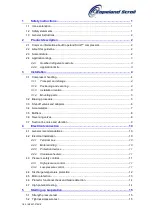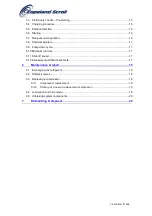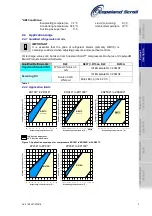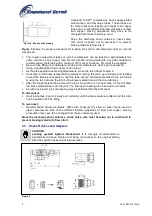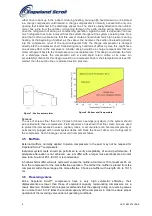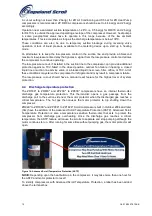
C6.2.19/0507-0708/E
9
Figure 9: Suction tube design
The reversing valve solenoid should be wired so that the valve does not reverse when the
system is shut off by the operating thermostat in the heating or cooling mode. If the valve is
allowed to reverse at system shut off, suction and discharge pressures are reversed to the
compressor. This results in a condition of system pressures equalising through the compressor
which can cause the compressor to slowly rotate until the pressures equalise. This condition
does not affect compressor durability but can cause unexpected sound after the compressor is
turned off.
3.7
Suction line noise and vibration
Copeland Scroll
compressors inherently have low
sound and vibration characteristics. However in some
respects the sound and vibration characteristics differ
from reciprocating compressors and in rare instances
could result in unexpected sound generation. One
difference is that the vibration characteristic of the scroll
compressor, although low, includes two very close
frequencies, one of which is normally isolated from the
shell by the suspension of an internally-suspended
compressor. These frequencies, which are present in all
compressors, may result in a low-level "beat" frequency
that can be detected as noise coming along the suction
line into the building under some conditions. Elimination
of the beat can be achieved by attenuating either of the
contributing frequencies. This is easily done by using one of the common combinations of
recommended design configurations. The scroll compressor makes both a rocking and twisting
motion and enough flexibility must be provided in the line to prevent vibration transmission into
any lines attached to the unit. In a split system, the most important goal is to ensure minimal
vibration in all directions at the service valve to avoid transmitting vibrations to the structure to
which the lines are fastened.
A second difference of the Copeland Scroll is that under some conditions the normal rotational
starting motion of the compressor can transmit an "impact" noise along the suction line. This
may be particularly pronounced in three-phase models due to their inherently higher starting
torque. This phenomenon, like the one described previously, also results from the lack of internal
suspension and can be easily avoided by using standard suction line isolation techniques as
described below. The sound phenomena described above are not usually associated with
reversible heat pump systems because of the isolation and attenuation provided by the reversing
valve and tubing bends.
Recommended Configuration
-
Tubing Configuration:
small shock loop
-
Service Valve:
"angled valve" fastened to unit / wall
-
Suction muffler:
not required
Alternative Configuration
-
Tubing Configuration:
small shock loop
-
Service Valve:
"straight through" valve fastened to unit / wall
-
Suction muffler:
may be required (acts as dampening mass)
S
a
fe
ty
in
s
tr
u
c
ti
o
n
s
P
ro
d
u
c
t
d
e
s
c
ri
p
ti
o
n
In
s
ta
ll
a
ti
o
n
E
le
c
tr
ic
a
l
c
o
n
n
e
c
ti
o
n
S
ta
rt
in
g
u
p
&
o
p
e
ra
ti
o
n
M
a
in
te
n
a
n
c
e
&
re
p
a
ir
D
is
m
a
n
tl
in
g
&
d
is
p
o
s
a
l
Summary of Contents for Copeland Scroll ZP23K Series
Page 24: ... ...


